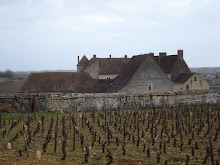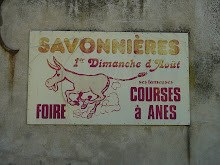You've heard about it before: the Old World versus New World debate on wine. I must admit, it is one of the reasons for the existence of VINUCATION. Below, you will find a comparison of Bordeaux versus California, but this is just a simple example that roughly illustrates some of the trends in the two viticultural worlds. When I think about it, I probably should have begun this blog with such a discussion, simply by virtue of the fact that it is such an important issue, but that's alright. We'll be talking a lot down the road about this sort of thing.
I will tell you: I do believe every wine has its place. If a wine is well made, we should drink it, whether it be a five-dollar Chardonnay from China or a five-hundred-dollar bottle of Burgundy. The trick is to know when, where, and with what. Some wines are made as beverages, and some are so much better with food than without, that it is pure silliness to drink them unaccompanied simply because of the fact that you are not tasting the wine at its most delicious. The fact is, so many wines from the New World are made as beverages, that this is a rule that you can look toward in determining how to drink your wine. Obviously this rule is mutable, and may change completely one day, but because the "New World" by definition does not have a long-standing deeply-ingrained culinary tradition, as does the "Old World" - French cuisine; Italian cuisine; Spanish cuisine - and does not have the long-standing viticultural tradition, there is not yet a natural symbiosis between the wine and the food in the New World. It will come in time, but it may take several hundred years.
I will continue this with you a little later. Until then, think about each of these comparisons and try to remember any recent wines that you've had which prove the premise.
| | |
| CALIFORNIA | BORDEAUX |
| Tend toward interventionist winemaking | Tend toward laissez-faire winemaking |
| More high technology | More artisanally-produced wines |
| Fruitier | Earthier |
| Round | Angular |
| Rich in oakey aromas | Allows character of grape to show more |
| Simpler, distinct, yet often profound flavors | More complex; more subtle flavors |
| Less versatile with food | More versatile with food |
| Better alone | Generally not as good alone |
| More expensive here than in California | Sometimes cheaper here than in France |
| Cult wines | Slow, steady price increase |
| More single-varietal oriented | Blend of up to five varietals more common |
| No concept of terroir | Fairly well-formulated concept of terroir |
| | |
| | |
Nota Bene:
Please remember that some of these comparisons are subjective in nature, and are, therefore, left to the taster to determine.Prost!
The Vinucator




No comments:
Post a Comment